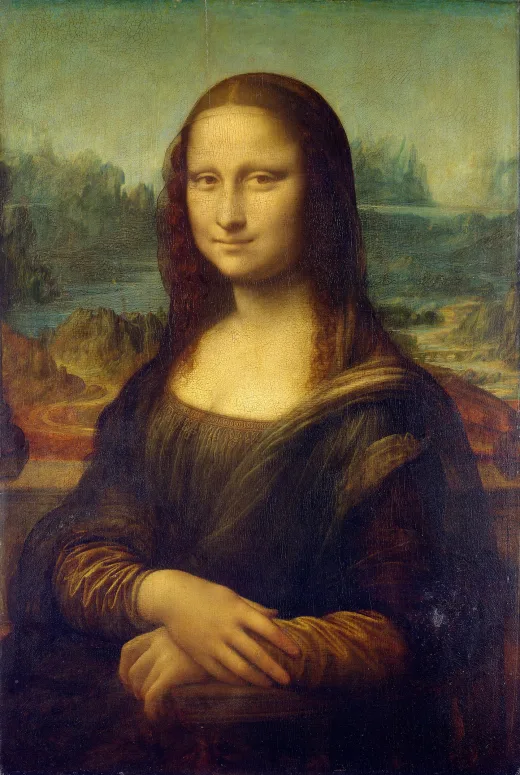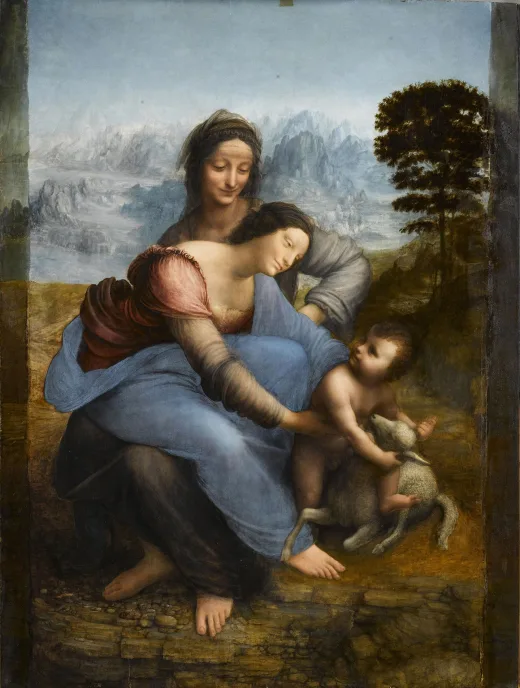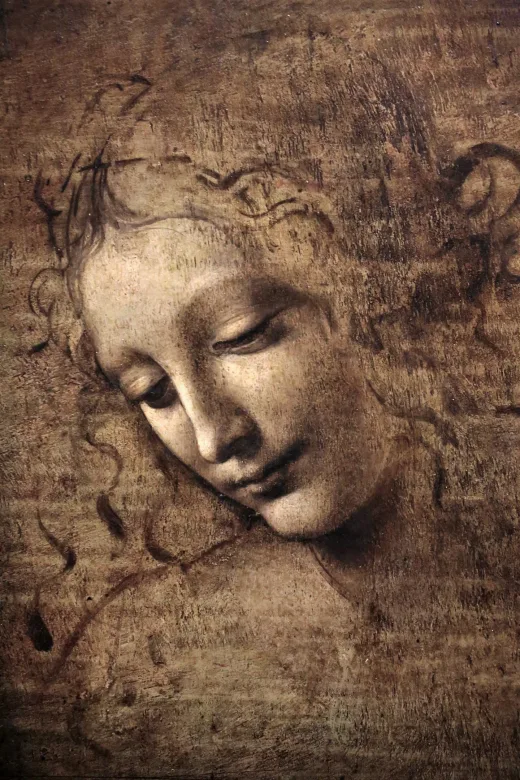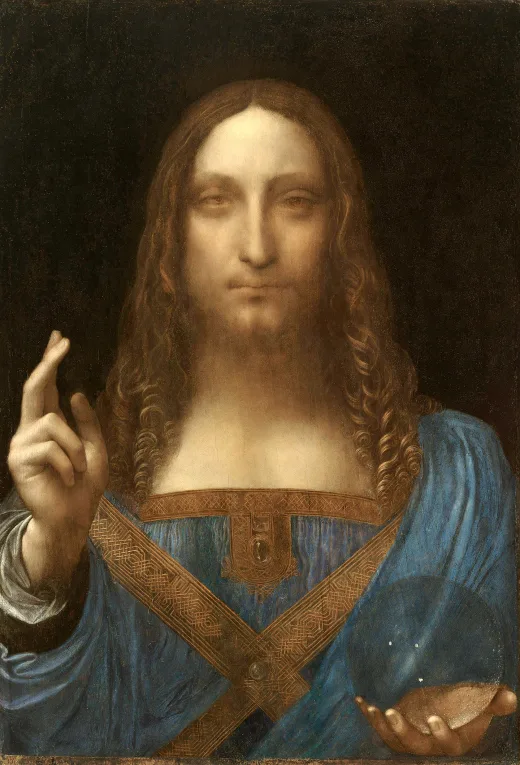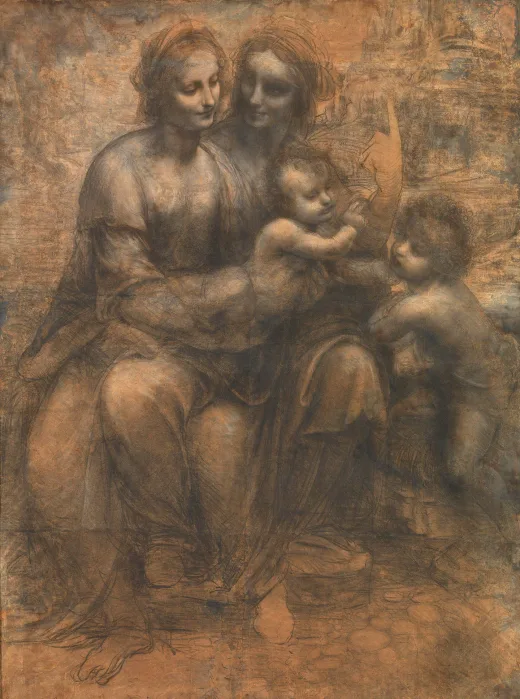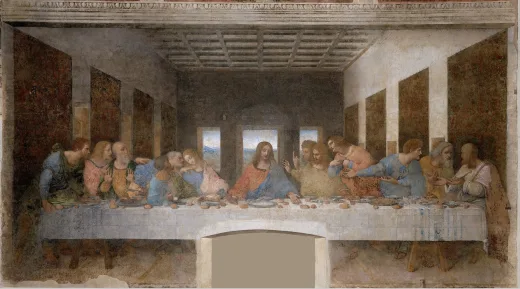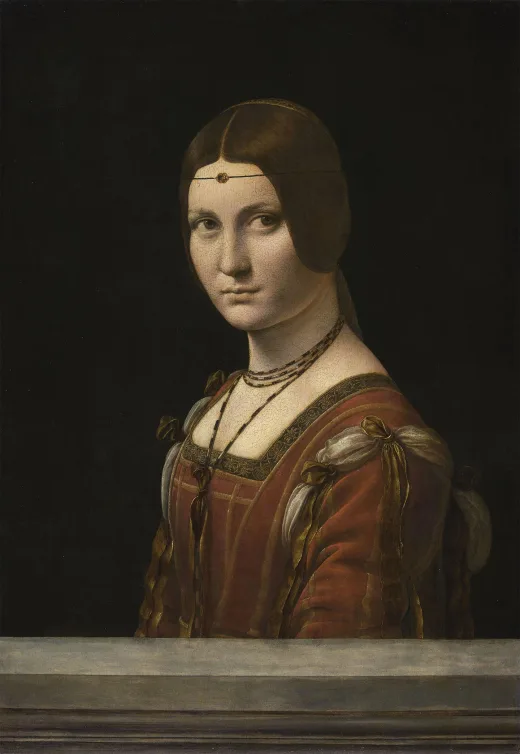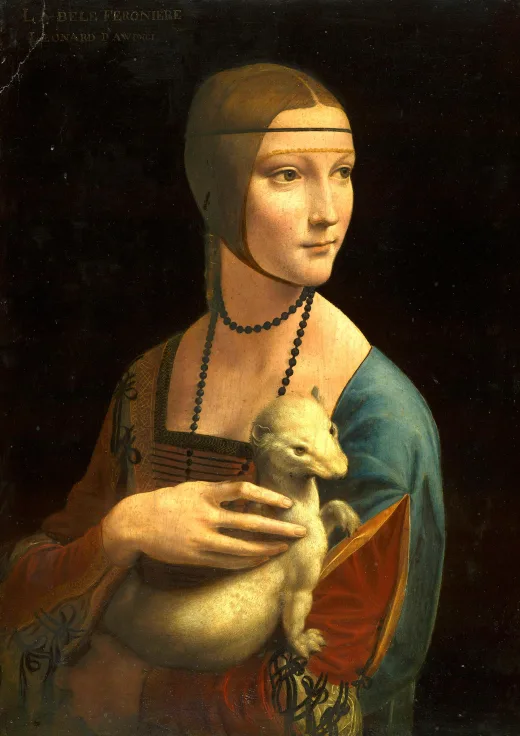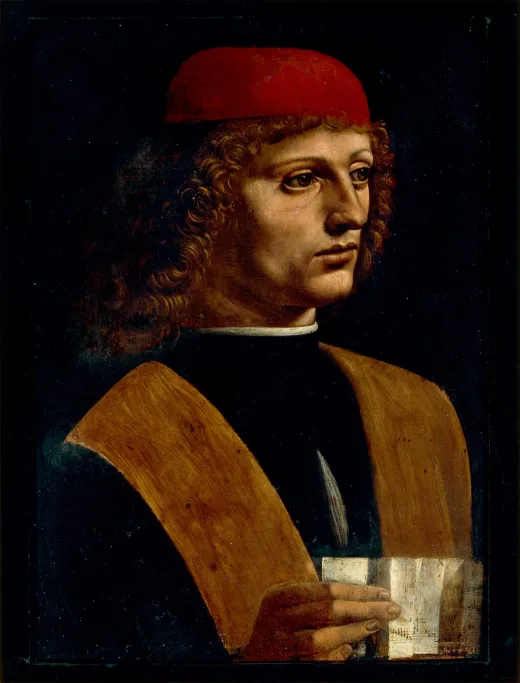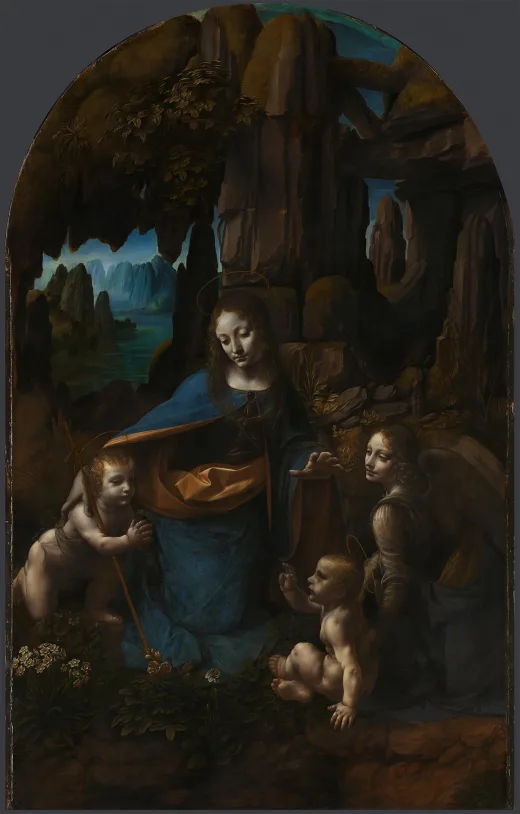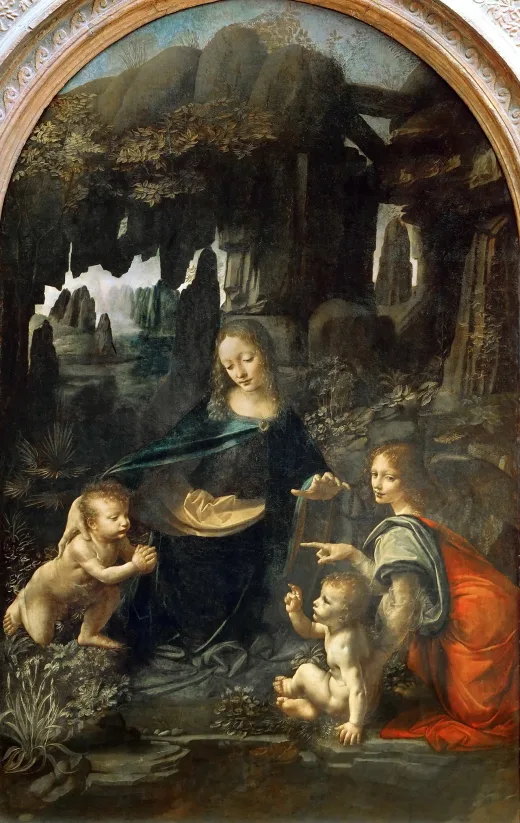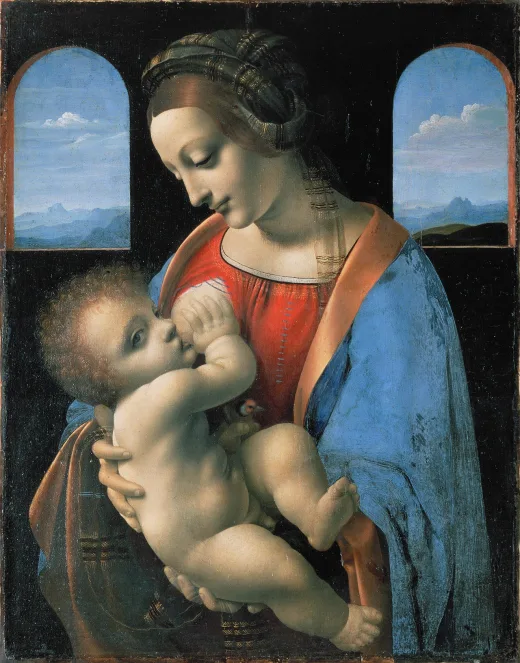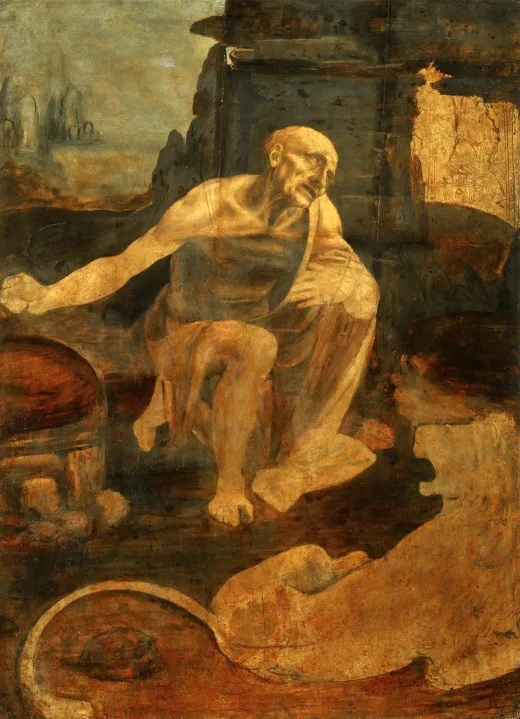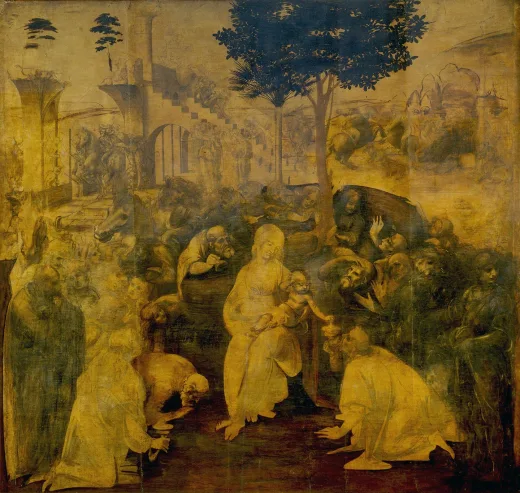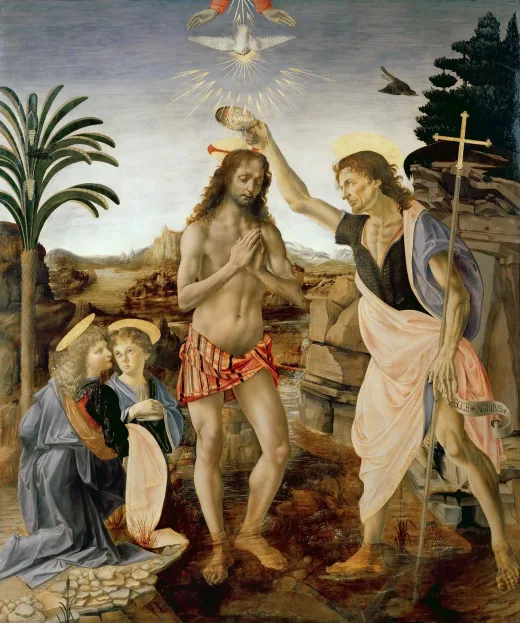达芬奇工作室《普拉多蒙娜丽莎》图片
原图尺寸:2224×2952像素(300 DPI)标清图
下载原图消耗2艺点
文件大小:10.22 MB
下载格式: PNG / ZIP
作品名称:普拉多蒙娜丽莎
Prado Mona Lisa
作品作者:列奥纳多达芬奇工作室
创作时间:约1503–1516 年
作品风格:文艺复兴盛期
原作尺寸:76.3 × 57 厘米
作品材质:胡桃木板油画
收藏位置:马德里普拉多博物馆
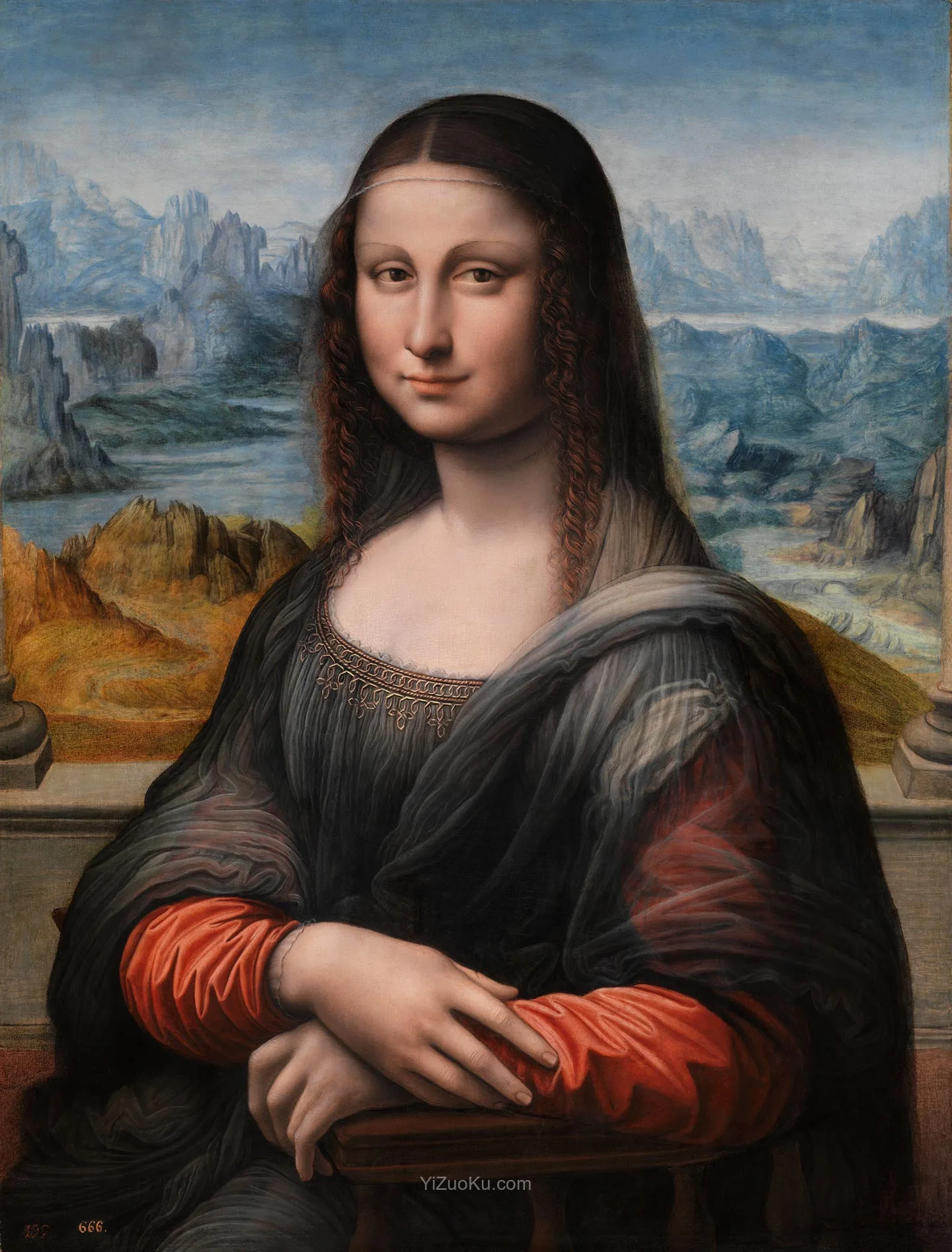
作品简介
《普拉多蒙娜丽莎》是达·芬奇工作室创作的画作,其主题与构图与巴黎卢浮宫所藏、达·芬奇更为著名的《蒙娜丽莎》相同。自1819年起,普拉多版《蒙娜丽莎》便收藏于西班牙马德里普拉多博物馆,但数十年来一直被认为是一幅相对不太重要的复制品。然而,经过2012年的修复后,普拉多版《蒙娜丽莎》被认定为已知最早的达·芬奇杰作工作室摹本。
尽管16至17世纪留存有数十幅《蒙娜丽莎》的复制品,但普拉多版《蒙娜丽莎》很可能是由达·芬奇的学生在其创作原版《蒙娜丽莎》的同一工作室同时绘制的,因此被认为是最具历史价值的复制品。在达·芬奇的学生中,萨莱或弗朗切斯科·梅尔兹最可能是普拉多版本的作者,但也有专家认为这幅画可能出自达·芬奇的某位西班牙学生之手。
普拉多版《蒙娜丽莎》的起源与达·芬奇的原作密切相关,因为两幅画很可能是在同一工作室同时创作的。最早的文献记载见于1666年马德里阿尔卡萨宫"南方画廊"的藏品清单,记为"莱昂纳多·达·芬奇手笔的女性肖像"。然而,这幅肖像画何时进入西班牙皇家收藏仍不得而知,尽管它可能在17世纪初就已传入西班牙。自普拉多博物馆1819年建馆以来,这幅复制品一直是其永久馆藏的一部分。
在修复之前,这幅画被归类为16世纪第一季度的匿名复制品。然而,它通常与拉斐尔或安德烈亚·德尔·萨尔托等意大利艺术家的杰作一同悬挂在普拉多博物馆。这幅画还存在一幅版画,这对于匿名复制品来说并不常见。
尽管有一些元素明显将这幅复制品与卢浮宫版本区分开来,但最引人注目的是,在普拉多版本修复之前,画作背景的风景完全不可见。这一背景在2011年至2012年普拉多博物馆的修复过程中被完全恢复,修复是为了应卢浮宫请求,将普拉多版纳入2012年3月29日至6月25日举办的临时展览《达·芬奇的最后杰作:圣安妮》。氧化的清漆表明,黑色的覆盖层是在复制品完成200年后添加的,即不早于1750年。
在修复过程中,这幅复制品还接受了红外反射成像和X射线检测研究,结果显示它是在达·芬奇的工作室中与原版《蒙娜丽莎》同时绘制的。这一发现的关键在于底层的素描稿,因为两幅画的素描稿相同,但风格不同,且素描稿的修改痕迹也一致。
这些发现,加上普拉多版本相较于卢浮宫版本的出色保存状态,展现了画作最初的色彩,并揭示了复制品原本应有的样貌,因为原版的清漆已因年代久远而开裂发黄。预计这些发现还可能为研究达·芬奇的原作提供更多线索。
普拉多版本与卢浮宫版本很可能是在达·芬奇工作室中由学徒同时绘制的观点,得到了以下观察结果的支持:普拉多版本似乎是从与原版略微不同的视角绘制的。这引发了人们的猜测,认为这两幅画可能构成了世界上第一幅立体图像,因此当以双眼分视法观看时(即左眼看普拉多版本,右眼看卢浮宫版本),可能会产生明显的3D效果。考虑到达·芬奇在《绘画论》中讨论过立体视觉的基本原理,这种可能性是合理的。然而,最近的一份报告表明,这对画作实际上并不能产生可靠的立体深度。
在修复之前,普拉多版的复制品有时被归为佛兰德斯画派的作品。这一结论是基于长期以来的观点,即复制品的画框被认为是橡木材质,并且画作曾被重新绘制。然而,在2010年的修复过程中,修复人员发现画框的材质是胡桃木,这是一种昂贵的木材,常用于达·芬奇的作品,如《抱银貂的女子》《美丽的费隆妮叶夫人》或《施洗者圣约翰》。
修复后,有观点认为达·芬奇的两名学生弗朗切斯科·梅尔兹或萨莱可能是这幅画的作者,但也有人对此提出质疑;他们认为作者可能是达·芬奇的西班牙学生,即费尔南多·亚涅斯·德·拉·阿尔梅迪纳或埃尔南多·德·洛斯·利亚诺斯。由于画作细致彻底的执行以及青金石或红漆等材料的使用,它不能被视作典型的工作室复制品。
马德里普拉多博物馆策展人安娜·冈萨雷斯·莫索在为展览《达·芬奇与蒙娜丽莎的复制品》编写的图录中写道,所谓"加奈版《救世主》很可能与普拉多版《蒙娜丽莎》出自同一位艺术家之手。
The Prado Mona Lisa is a painting by the workshop of Leonardo da Vinci and depicts the same subject and composition as Leonardo's better known Mona Lisa at the Louvre, Paris. The Prado Mona Lisa has been in the collection of the Museo del Prado in Madrid, Spain since 1819, but was considered for decades a relatively unimportant copy. Following its restoration in 2012, however, the Prado's Mona Lisa has come to be understood as the earliest known studio copy of Leonardo's masterpiece.
The original Mona Lisa, by Leonardo da Vinci, Louvre
Although there are dozens of surviving copies of the Mona Lisa from the 16th and 17th centuries, the Prado's Mona Lisa may have been painted simultaneously by a student of Leonardo in the same studio where he painted his own Mona Lisa, so it is said to be the copy with the most historical value. Among the pupils of Leonardo, Salaì or Francesco Melzi are the most plausible authors of the Prado's version, though other experts argue that the painting could have been executed by one of Leonardo's Spanish students.
The origins of the Prado's Mona Lisa are linked to those of Leonardo's original, as both paintings were likely created simultaneously in the same studio. The first documentary reference was made in the 1666 inventory in the Galleria del Mediodia of the Alcazar in Madrid as Mujer de mano de Leonardo Abince (Woman by Leonardo da Vinci's hand). However, it is still unknown when the portrait entered the Spanish Royal Collection, though it could have been already in Spain in the early years of the 17th century. Since the Prado's founding in 1819, the copy has been part of its permanent collection.
Previous to its restoration, the painting was catalogued as an anonymous copy from the first quarter of the 16th century. However, it usually hung in the Prado alongside masterpieces of Italian artists such as Raphael or Andrea del Sarto. A lithograph of the painting also exists, which is unusual for an anonymous copy.
Although there were elements that clearly distinguished the copy from the Louvre's version, the most striking point was the fact that until the restoration of the Prado's version, no landscape background was visible. That landscape was fully recovered through the restoration carried out by the Prado between 2011 and 2012, for a request to include the Prado's work in a temporary exhibition in the Louvre called Leonardo's last masterpiece: The Sainte Anne, from 29 March to 25 June 2012. The oxidized varnishes indicated that the black repaint had been made 200 years after the copy was painted, that is to say, not before 1750.
During this restoration process, the copy was also submitted to a study of infrared reflectography and radiography, where the results revealed that the painting had been made in the workshop of Leonardo da Vinci at the same time the original Mona Lisa was painted. The "key" of this discovery was the underlying drawing, as it is the same but with different style in both paintings, as well as the drawing's corrections.
These findings, coupled with the excellent state of preservation in regard to the Louvre's version, show the original colours of the Prado's painting and indicates what the copy must have originally looked like, as the varnish on the original has become cracked and yellowed with age. It is anticipated that such revelations also may offer further insight into Leonardo's original.
The suggestion that the Prado version was painted in the workshop of Leonardo at the same time as the Louvre version, presumably by an apprentice, is supported by the observation that it appears to have been rendered from a slightly different perspective than the original. This has fuelled speculation that the pair may constitute the world’s first stereoscopic image, and hence when viewed dichoptically (i.e. with the Prado version viewed by the left eye, and the Louvre version by the right) may produce a distinct 3D appearance. This possibility is plausible, given the fact that Leonardo discussed the rudiments of stereoscopic vision in his Trattato della pittura. However, a more recent report has demonstrated that this pair in fact gives no reliable stereoscopic depth.
Before the restoration, the Prado's copy was sometimes attributed to a painter of the Flemish school. This conclusion was based on the long-held belief that the copy's wooden frame was thought to be oak and due to its repainting. However, during the 2010 restoration, conservators realized the frame's material is walnut, an expensive wood frequently used in works of Leonardo, such as Lady with an Ermine, La Belle Ferronnière or Saint John the Baptist.
After the restoration, it was suggested that two of Leonardo's pupils, Francesco Melzi or Salaì, were among the probable painters, though others questioned this assumption; they suggest the author could have been a Spanish student of Leonardo, namely Fernando Yáñez de la Almedina or Hernando de los Llanos. The painting cannot be considered as a typical workshop copy due to its careful and thorough execution, as well as its use of materials such as lapis lazuli or red lacquer.
Ana Gonzáles Mozo, curator at the Prado Museum in Madrid, wrote in the catalog for the exhibition Leonardo and the Copy of the Mona Lisa that the so-called Ganay copy of the Salvador Mundi was likely done by the same artist that painted the Prado Mona Lisa.
